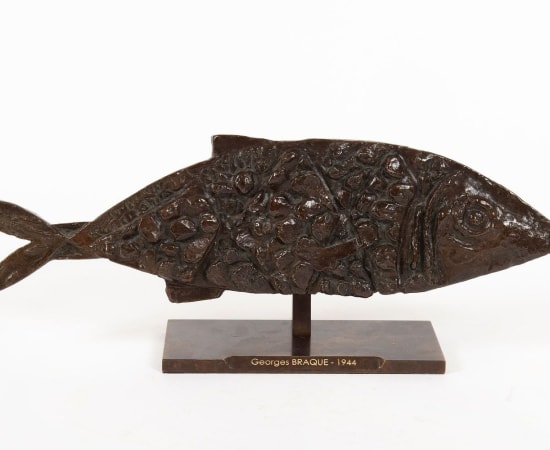Georges Braque (1882-1963) French
Georges Braque's paintings show an artist who was open to experimentation and one whose artwork was inspired by and reflective of his surroundings, peers, and society.
Braque was born in Argenteuil-sur-Seine, France in 1882. By the age of 15 he was studying art in the evenings at the Ecole des Beaux-Arts in Le Havre. Braque's original work was in the Impressionist style. He moved to Paris at the turn of the century to earn his craftsman certificate from a master decorator. During this time he painted at the Academie Humber where he became friends with Marie Laurencin and Francis Picabia. In 1906, one of the first of Braque's style changes had occurred. After spending the summer of that year with Othon Friesz in Antwerp, George Braque's art was Fauve in style. His first showing of the Fauve work took place at Salon des Independants in Paris in 1907, with his first solo show in 1908.
Another style change began in 1909. It was that year that Braque began to work with Pablo Picasso to develop Cubism. By 1912, Georges Braque's Cubism work and that of Picasso were very similar. Experimentation and collaboration would become a hallmark of George Braque's artwork and career. George Braque's collage art is one example of such experimentation and collaboration with Picasso. In the following years, Picasso and Braque also experimented with the pasted paper (papier colle) technique. Their professional collaboration concluded in 1914.
After World War I, in which Braque was wounded, he met and developed a close friendship with Juan Gris. His art again changed, becoming less schematic and freer. In the 1920s, after a successful exhibition in Paris and designing the décor for two Sergei Diaghilev ballets, Braque's fame grew. By the end of the decade, Georges Braque's art was considered to be more realistic. However, certain aspects of Cubism were still evident, a trait that would continue in all of Braque's subsequent work.
The 1930s and 1940s stand as examples of the artist's continued evolution and the influence of his environment. In the 30s, he made engraved plasters and began to portray mythological subjects. In 1940, while spending World War II in Paris, his work primarily consisted of still lifes and interiors which had a decidedly more somber tone. He also began to make engravings, lithographs, and sculptures. By the end of the decade, birds, landscapes, ateliers, and seascapes became recurring themes in his art. While his declining health prevented Braque from taking on other large-scale commissions, he remained active and continued to make lithographs, design jewelry, and paint until his death in Paris in 1963.
George Braque's artwork is very valuable, and Bailly Gallery is pleased to offer Braque paintings for sale. The gallery will gladly arrange appointments for private viewings as well as welcome interested collectors to the gallery to view the works available. Contact the gallery to arrange an appointment or to discuss adding to your collection.

